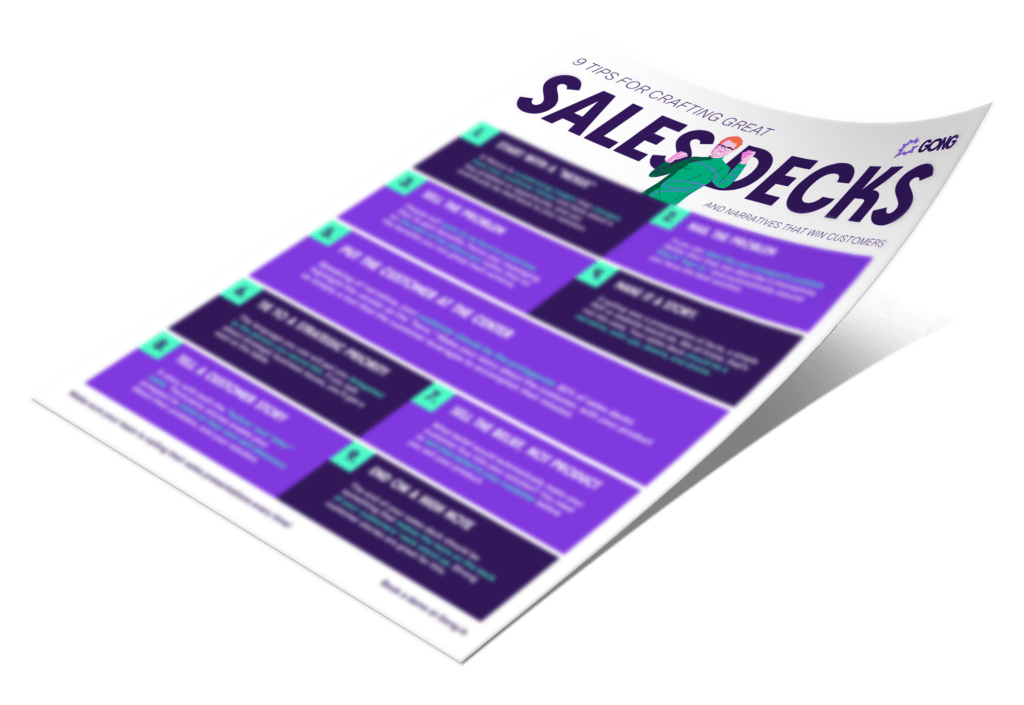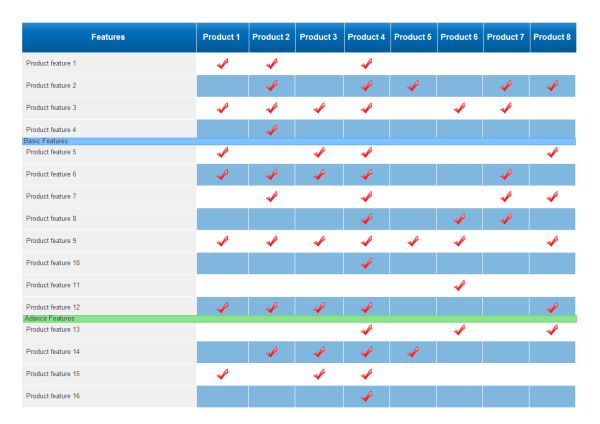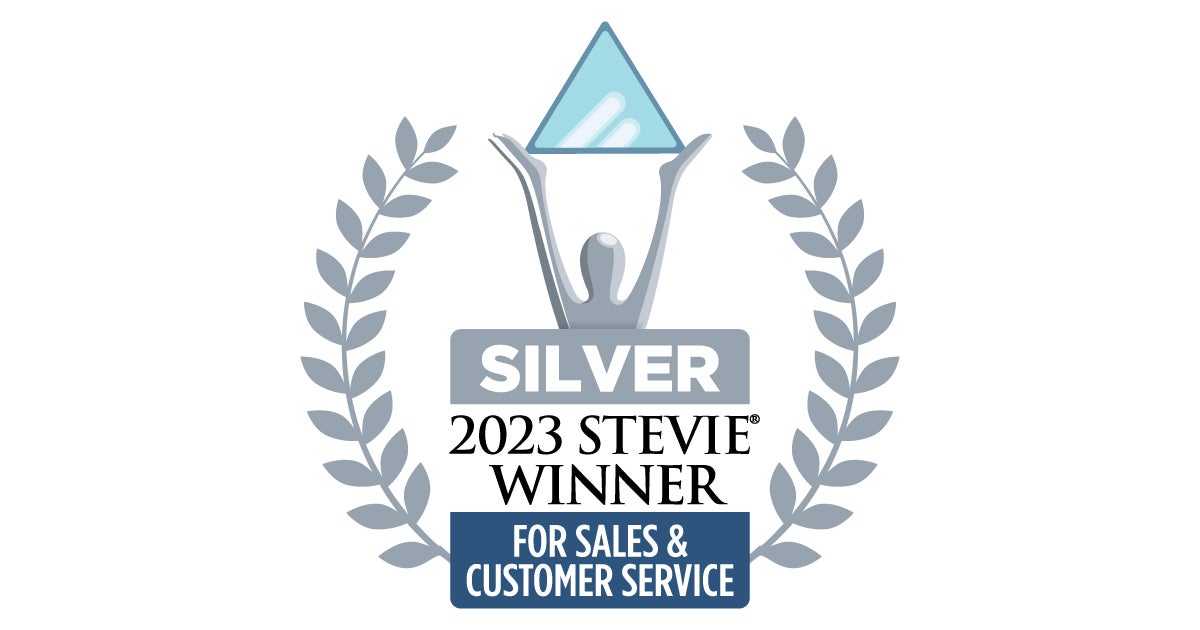Boost your competitive win rate with these battlecard examples

When you have a top-notch sales battle card, it can feel like cheating.
You have the edge, the upper hand when a buyer tells you about a competitor. You handle objections like swatting flies out of the air — one comes at you, and you squash it immediately.
The best sales battle cards have the following characteristics:
- Short and sweet: No more than one page. Bullets. High-level talking points. Skimmable.
- Answers to common questions/objections: Almost like a mini-FAQ situation.
- Rely on hard data and facts: Not your opinion, but facts. Win ‘em with numbers.
- Updated regularly: Pricing changes. Company policies are tweaked. Competitors come and go. Be armed with the latest and greatest.
- Used regularly and consistently: Everyone on your sales team must be speaking the same language. Accuracy and consistency are critical.
Yet even with the above traits, sales battle cards still are wrought with all the “wrong” things and lacking in many of the “right things.”
6 sales battle card examples (good and bad)
Over the next few minutes, we’ll break down the 3 examples of what to DO (and 3 examples of what NOT to do) when it comes to your sales battle cards.
DON’T include feature charts
If your buyer has a spreadsheet to compare and contrast your solution to all others, you are in trouble.
A tit for tat “comparison trap” is, well, a trap.

It means your buyer thinks your offering is more of a commodity and less of a solution. And that’s not always a winnable situation to find yourself in.
If your sales battle card includes a feature chart, you have become part of a backoff, triggering a “spec war” of sorts.
Feature A: You WIN!
Feature B: Competitor A WINS!
Feature C: It’s a TIE!
This back and forth cycle continues until the buyer:
A: Uncovers a true “winner” (check more of the feature boxes).
B: Concludes both solutions are pretty much the same.
If A, you better hope you “win” on features.
If B, get ready to be ground down on pricing, contract length, payment terms, or all three.
Your differentiator has to be something bigger picture, rather than incremental (feature-by-feature) — something that stops the buyer from comparing you and your competitor side-by-side and making an “intelligent business decision” (note sarcasm).
Avoid the feature comparison trap by getting buyers to think about “jobs to be done.”
Here’s a real world example from the Gong sales team:
Our core market is B2B sales, but we sometimes get compared to generic call recording platforms.
The trap: explaining how our features are better than our “competitors.”
The answer: Entirely change the perception by saying, “We’re the only solution designed specifically for sales” OR “The other solutions are great, but aren’t built to derive meaningful insights into customer-facing conversations.”
These incredibly simple, straightforward statements resonate a lot more. But, again, this is because we eliminate the perception that we’re in the same category as the speech analytics providers they’re already familiar with.
Gong — the product — is built for sales.
Every single time a competitor is mentioned on a sales call, the platform creates an alert AND stores that call snippet.
When customers give sensitive information (like card details) the precious digits are automatically redacted from the recording and transcript.
Et cetera, et cetera.
DO detail competitive features
Instead of listing the features you have and sharing those your competitors do not (aka “feature charts”), lean into where your product is different (where you win).
The same feature but better is not nearly as powerful or effective as our feature is different/unique/one-of-a-kind … and therefore superior.
It’s a subtle — yet critical — difference.
Here’s how it’s done:
Share your differentiators — your list of features that are not available with the specific competitor. The key phrase here is “specific competitor.” Remember, this sales battle card will look different for each competitor.
For those features both you and your competitor both have, frame each feature of your product or solution as a comparison … NOT a generic pitch of each feature.
>>Example: [Insert competitor name] does [XYZ). We also enable you to do [XYZ] (or just X and Y] AND ALSO help with …
For those features your competitor has but you do NOT have, reframe the benefits and lead to your differentiators.
>>Example 1: [Insert competitor name] does [XYZ) but that doesn’t help solve [insert pain point] like our feature, which allows…
>>Example 2: [Insert competitor name] does [XYZ) which is interesting, but it doesn’t help if you don’t have …
Bonus talk track: “I know you’ve already seen [insert competitor name], so you’re probably quite familiar with some of what I’m going to show you. Please stop me if this happens and tell me what you would like to see so I can help you compare.”
THEN lean into your differentiators and explain how they make the solution better suited to fix their #1 problem. You’ve done your homework and know your buyer’s #1 issue … and know that your solution can solve it.
Need a template to get started?
Download the Battle Card Template For Ultra-Competitive Deals (it’s free 99)
DON’T give an elevator pitch
Here is the problem with generic elevator pitches: They encourage reps to “engage steamroller mode” and feature-dump.
Boring. Dull. Eye-roll-inducing. And most important, NOT valuable to the prospect.
INSTEAD, tee up your pitch as an answer to a question.
What would your answer sound like if the question were formulated as:
Can you help me understand how [Competitor] and [Your Company] are different?
Treat it as an objection.
Not as an invitation to launch into a monologue.
Here’s what that looks (sounds) like:
DO give a competitive talk track
So no elevator pitches.
Check. Got it.
Instead, give a competitive talk track. That starts by validating each objection.
It’s human nature to want to feel understood.
Start by validating the objection:
“That seems like a valid concern. You are correct. Both [insert competitor name] and our solution are in the same category — both aim to solve [insert paint point and/or customer concern].”
THEN move into story-telling mode.
Why is your product BETTER?
What does your product do SPECIFICALLY solve your buyer’s pain?
Like this:
We both started as doing X. We realized that for [insert job title OR industry OR country], it is a very different need because [insert reason]. So it turns out, we are the only solution that solves [insert pain point] in a way that works for [insert job title OR industry OR country] because we do [insert differentiator].
DON’T use one-size-fits-all social proof
Social proof kills deals (when used wrong).
You already know this.
You need to show why
Instead of simply sharing reviews … show snippets that tell a story of where your customers win.
Instead of just showing logos … highlight why those logos chose you over the competition.
Instead of highlighting where you win … make a damaging admission (Yes, [Competitor] is cheaper but [Your Company] is better because…)
DO back your talk track with relevant examples
Everyone loves a good story.
When it comes to sales battle cards, the key is to find THE customer story (or a few stories) that can best support your buyer as they compare your solution to others.
Here’s how it’s done:
- First, create a list of easy-to-reference customer stories that support your case.
- Then, add a short explanation next to each customer, explaining why they chose your solution instead of the competition.
Here’s what that sounds like:
“[insert customer name] chose our solution over [insert competitor name] because they needed to be able to access data from [insert integration partner] so they could [insert business outcome]. The result after 6 months was [give ROI stat]”
Bonus: Include “boomerang” stories of customers that left to your competitor and came back. Get more insider tips in our Sales Battle Card Template.
(BONUS): Plant landmine questions
Landmine (in combat): An “explosive device concealed under or on the ground and designed to destroy or disable enemy targets …” (Wikipedia)
Landmine (in sales): a TOUGH QUESTION you tell your buyer to ask your competitors aka, questions to ask prospects that put competitors in a difficult place.
The goal of a good landmine is to trip up your competitor.
Landmine questions — when used correctly — are tough to defend against.
Ideally, in every competitive situation, you should have 2-3 landmines at the ready. So prep your buyer with them and have them report back how the competitor replied.
For example:
“One thing I’m pretty sure [insert competitor name] doesn’t support is [insert landmine]. So the next time you speak with them, you should ask about it because [negative outcome].
Still need inspiration?
Whether you’re creating a new set of sales battle cards or updating existing battle cards, you want examples.
You’re looking to follow a proven formula.
You NEED a template.
This is it.
Download it (for free) and turn your battle cards into the ace up your reps’ sleeves.
Get the Sales Battle Card Template for Ultra-Competitive Deals.
